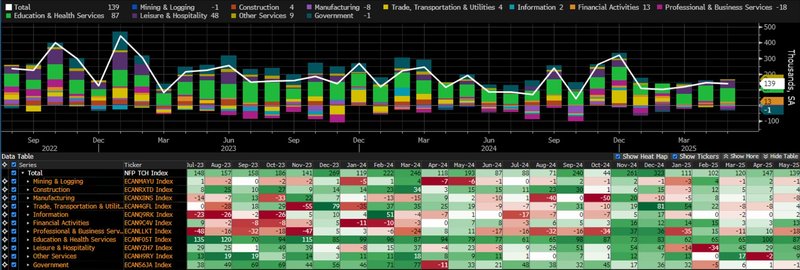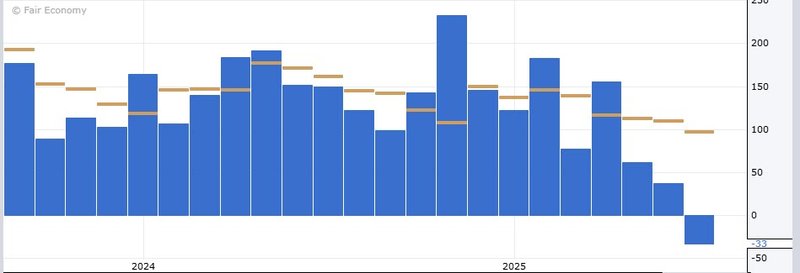Dollar steadies near multi-year low as markets brace for pivotal US jobs data
The greenback’s slide takes a breather ahead of a critical Non-Farm Payrolls report that could shift Fed policy expectations.

Dollar stabilizes after steep decline, with traders awaiting key labor market signals from the June NFP report.
Consensus sees soft job growth, but downside risk looms after weak ADP.
Trump intensifies rate cut pressure as Fed officials remain cautious; markets still favor a September move.
Sterling tumbles on UK political jitters, while trade headlines continue to shape global FX dynamics.
Dollar pauses slide as traders eye US jobs report
The US dollar stabilized on Friday after sliding to a 3½-year low earlier this week, as traders turned their focus to the June Non-Farm Payrolls (NFP) report. While the greenback’s recent sell-off was fueled by fiscal worries and dovish Fed rhetoric, today’s jobs data could reset expectations and trigger renewed volatility across currency markets.
Markets are bracing for a modest 110,000 job gain in June, a slowdown from May’s 139,000. The unemployment rate is forecast to edge up to 4.3%—its highest since late 2021—while wage growth is expected to ease to 0.3% month-on-month. Hiring in leisure and hospitality likely cooled amid softer consumer demand, while healthcare remains a likely bright spot. Overall, the data may continue to reflect a labor market that is cooling but not collapsing.

However, recent data surprises, including ADP’s -33,000 print and soft ISM employment indices, suggest downside risks. A major disappointment—particularly a print below 100k—could stoke renewed bets on a July rate cut and add fresh downward pressure on the dollar.

Politics loom large over Fed policy as Trump ups pressure
The jobs report lands at a critical political juncture. President Donald Trump has stepped up pressure on the Federal Reserve, arguing that rate cuts are urgently needed to support growth. Fed Governors Christopher Waller and Michelle Bowman—both seen as close to the Trump camp and possible successors to Chair Jerome Powell—have hinted that they may support a cut as early as this month.
So far, Powell and the broader FOMC have resisted, pointing to sticky inflation and tariff-related risks. But today’s data could tip the scales. A weak NFP report would likely strengthen the argument for immediate policy support, especially as political rhetoric intensifies ahead of the July 9 deadline for Trump’s tariff truce.
Currently, markets price in just a 25% chance of a July cut, with expectations for September hovering above 70%. But that calculus could shift swiftly if labor market cracks widen.
Trade developments cloud outlook as tariff deadline nears
Adding to market unease are renewed trade tensions. President Trump this week announced a new 20% tariff on Vietnamese goods and a separate 40% “transshipping” tariff, while simultaneously lifting restrictions on US chip-design software exports to China. The moves send mixed signals, and with no progress reported on broader trade negotiations, the self-imposed July 9 tariff deadline looms large.
The uncertainty is keeping investors on edge and weighing on global growth sentiment, particularly in Asia and Europe. Oil prices remain soft as the Israel-Iran ceasefire holds, easing geopolitical fears, while OPEC+ prepares to raise output in August.
Sterling pressured by UK political unrest
In currency markets, the British pound remains under pressure, extending its losses amid rising political instability. Chancellor Rachel Reeves, a key figure in maintaining market trust in the UK’s fiscal policy, faced growing speculation about her future after Prime Minister Keir Starmer failed to publicly back her. Markets fear her replacement by a more dovish figure—such as Cabinet Minister Pat McFadden—could usher in looser fiscal policy, further rattling gilts and Sterling.
The pound is currently the worst-performing major currency this week, and UK 10-year yields have surged as investors reprice risks tied to the Labour government’s economic direction.
Fed’s Barkin urges patience despite soft data
Meanwhile, Richmond Fed President Tom Barkin struck a measured tone. In an interview with Fox Business, he played down the ADP miss and said the Fed is watching the unemployment rate closely. With joblessness stable between 4.1% and 4.3%, Barkin argued that labor conditions remain steady. However, he acknowledged the growing complexity of the outlook, citing tariff uncertainty, inflation stickiness, and pending tax legislation.
“There’s more we’re going to learn,” Barkin noted, suggesting that the Fed is in no rush. Despite market hopes for quicker easing, most officials still prefer a cautious approach—unless today’s data forces a pivot.
